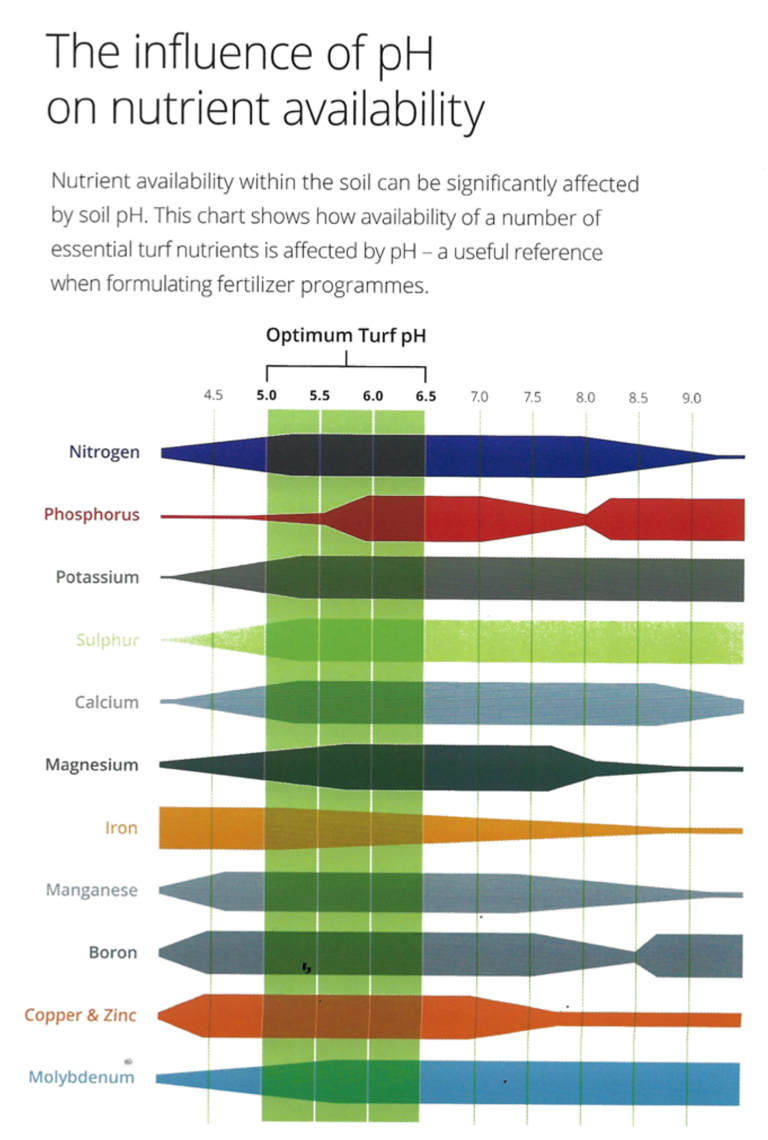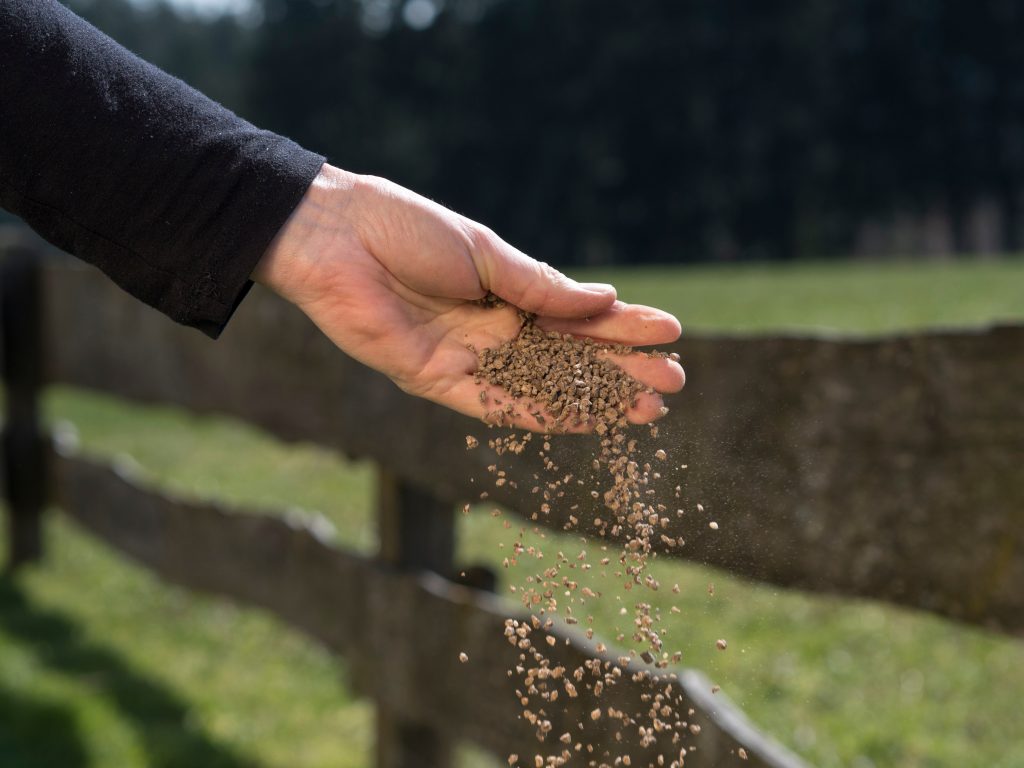The Facts
Sure, giving your lawn a water now and then will allow it to survive. But if you want a lawn that will be the envy of all, it will need a good dose of fertiliser every few months.
With only a little bit of nourishment, your lawn becomes lush, thick and capable of restricting the growth of weeds and resisting disease.
The benefits are clear, but how do you decide which fertiliser is right for your lawn? Before you begin, you should understand that the effectiveness of a fertiliser may depend on the soil. You can feed your turf anytime, but if your soil is not well, the fertiliser may not be completely absorbed by the plant and could end up being a waste.
Know Your Soil pH
A healthy soil allows the turf to absorb nutrients and promotes root activity, so the first step is to know what your soil needs. To find out, do a pH test. The result of a pH soil test ranges from 0 – 14. A healthy soil will be in the range of 5.0 – 6.5. (For reference, see the chart below). The green columns indicate the optimum pH for nutrient intake.
If the pH test result is below 5, your soil is acidic. This is the most common result here in Queensland. To restore your soil’s pH to neutral, apply a lime-based product to the lawn. Make sure to follow the application rate and instructions, aerate the soil, and water it in.

If the pH test result measures more than 7, your soil is alkaline. In this case, you should apply a sulphur-based product such as “sulphate of ammonia” to restore the soil’s pH level to optimum levels. Again, follow the application instructions, aerate the soil and water it in.
Home soil pH sample test kits are available at your local garden centre or Bunnings for about $20. They are easy to use and come with instructions. There are also soil pH meters available which you insert into the ground to produce a reading. Alternatively, you can take a sample to your local garden centre and ask them to test it for you. When gathering samples, make sure you take from 10-15cm deep and in several patches of your yard. This will give an average soil sample.
What is N-P-K?
Each lawn fertiliser comes with three macro-nutrients: Nitrogen (N), Phosphorus (P), and Potassium (K). These ingredients will appear on the fertiliser packaging as a ratio, e.g. 15-4-11. This number is known as the N-P-K ratio – the proportion of the three plant nutrients in order – and reflects the percentage of each nutrient by weight. Select your fertiliser based on the needs of your soil and turf.
Nitrogen (N)
Nitrogen will normally make up the highest percentage of the fertiliser. This nutrient will improve the health of your grass, making it greener, thicker, and lusher.
Potassium (K)
This nutrient aids the overall strength and health of your turf. It will give it the energy to cope with dry spells and daily wear.
Phosphorus (P)
To promote robust and healthy roots, a small percentage of phosphorous is required.
Preparing For Fertilising
- Test your soil’s pH.
- Accurately measure your lawn to know how much fertiliser you need.
- Choose your fertiliser based on your soil test results and your turf variety.
- Invest in a good quality fertiliser spreader if using a granular fertiliser. This will give you a consistent result.
- Ideally, mow your lawn two days before fertilising to give the fertiliser the best chance to get to the roots and be absorbed.
- If you have time, consider aerating your lawn. This allows the fertiliser to better penetrate the soil.
- Fertilise your lawn. Read the instructions and application rate carefully. Apply with care to ensure consistent application.
- Water your lawn immediately after application. Make sure the fertiliser has soaked in well before mowing again.
- Wait a week before mowing again.
When to fertilise:
Early spring
Early summer
Mid-late Autumn
Different Types of Fertiliser
Liquid fertilisers
These fertilisers are absorbed by both the soil and the turf’s leaves, so expect the benefit of near immediate results if you choose this type. Use liquid fertilisers to give the turf a “top-up” of nutrients between regular slow-release feeds. These fertilisers are very easy to use with bottles that attach to your hose.
Slow-release granular fertilisers
Slow-release fertilisers feed your lawn continuously for up to three months. A good quality product will keep your lawn consistently green for that three month period and won’t just give an initial fluorescent green burst. Slow-release fertilisers come in a granular form precisely mixed with the correct ratio of N-P-K for a variety of pH needs. Read the packaging to find the right mix for your lawn and soil. Use a fertiliser spreader for best results and water in. There should be no nutrient run-off. Apply early spring, summer and late autumn for best results
Organic lawn fertilisers
These fertilisers work on continual soil improvement that in turn, produces healthy turf. True organic fertiliser will have a certification on the label – make sure to look out for this. However, recommended “organic” fertilisers can have a blend of natural (organic) and synthetic (manufactured) fertiliser. Because of their ingredients – seaweed, fish, and manure – these fertilisers can have an odour so be considerate of your neighbours! The best time to fertilise with organics is late March, during spring, and late June.


